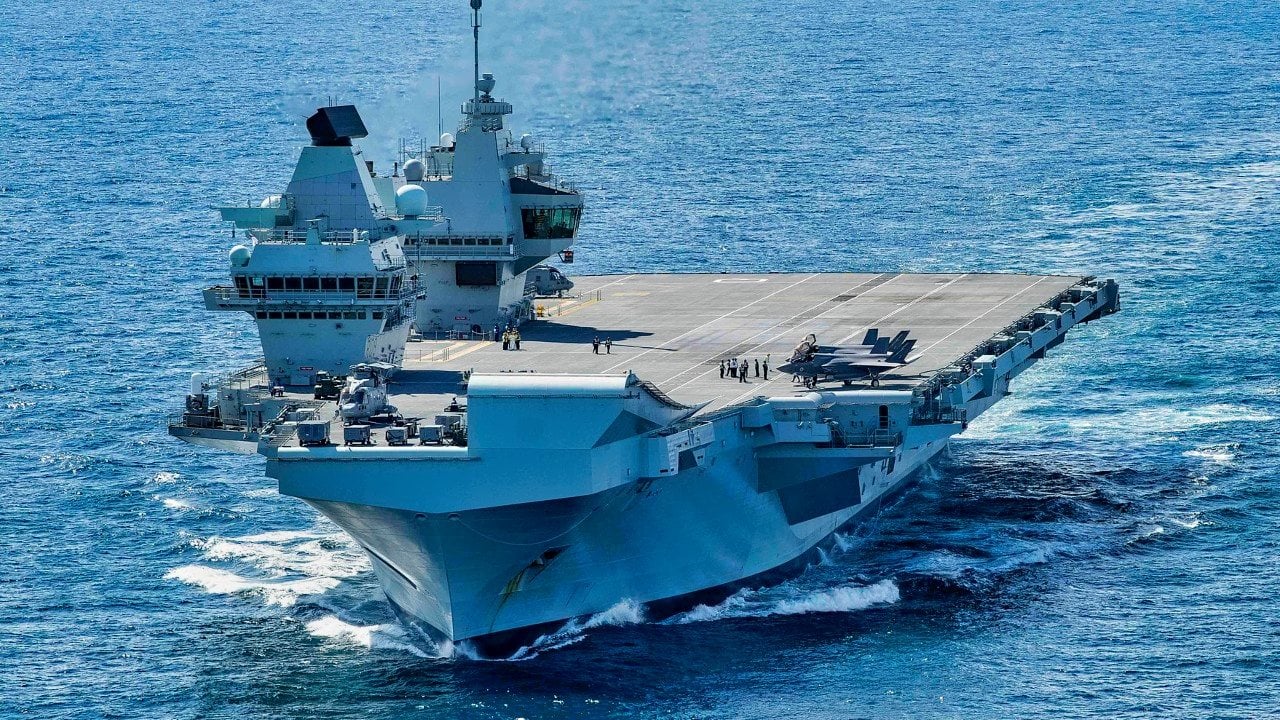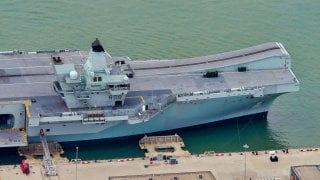The Drama Show That Is the Queen Elizabeth-Class Aircraft Carrier
The carrier flagship of Britain’s Royal Navy, the HMS Queen Elizabeth, made headlines this month after suffering from a small fire while docked on the shores of Loch Long in Scotland. Damage was very limited and the fire was quickly brought under control, according to reports.
The carrier flagship of Britain’s Royal Navy, the HMS Queen Elizabeth, made headlines this month after suffering from a small fire while docked on the shores of Loch Long in Scotland. Damage was very limited and the fire was quickly brought under control, according to reports.
The fire was not the first knock to the carrier’s reputation this year. The 65,000-ton warship’s starboard propeller malfunctioned a few months ago. More concerningly, in January, the Queen Elizabeth was unable to back up government assurances that it could be deployed to respond to Houthi aggression in the Red Sea. The flagship remained in a Liverpool shipyard instead.
Tallied up, these mishaps do not bode well for the carrier’s standing in the public eye.
The History of the Queen Elizabeth Class
Toward the end of the 1990s, a newly elected Labor government published its Strategic Defense Review. Scrutinizing every weapons system in use by British forces, the report emphasized a need for offensive airpower and additional aircraft carriers.
Around this time, Britain’s Ministry of Defense sought a replacement for its Invincible-class ships. Multiple manufacturers were tasked with producing design plans for future warships. Both BAE Systems and Thales Group were selected for the work. In 2014, the lead ship of the Queen Elizabeth class was launched, followed by the HMS Prince of Wales in 2017.
The Queen Elizabeth supercarriers displace roughly 65,000 tons, nearly three times more than their Invincible predecessors. Two Rolls-Royce Marine Trent MT30 36MW gas turbine generator units power the hefty ships. Nuclear propulsion was proposed originally, but it was rejected due to the high costs and manpower associated with this power source.

Each carrier in this class is fitted with the Phalanx Close-In Weapons System, a radar-guided gun, and other close-in options. The flight deck of the Queen Elizabeth carriers is 280 meters long and can launch up to 72 airframes, including thirty-six F-35B Lightning II fighter jets, as well as all helicopter platforms used by the UK armed forces.
Limitations of these Aircraft Carriers
While the Queen Elizabeth-class warships are expected to remain in service with the Royal Navy through the late 2060s, some critics think the aircraft carriers should be retired much sooner. In 2024 alone, the Queen Elizabeth had to pull out of the largest NATO exercise since the Cold War due to issues with her propeller shaft.
The embarrassment was compounded by the still-unexplained late departure of the HMS Prince of Wales to replace its sister ship for the exercise. This month’s fire is just the latest mishap to mar the carriers’ reputation. Overall, critics question the British government’s willingness to adequately fund the Queen Elizabeth program.
About the Author: Maya Carlin
Maya Carlin, National Security Writer with The National Interest, is an analyst with the Center for Security Policy and a former Anna Sobol Levy Fellow at IDC Herzliya.
Image Credit: Shutterstock.


